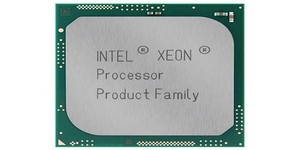
Intel has announced that it has suffered a hiccough in its tick-tock development cycle, confirming rumours that its upcoming 10nm parts have been delayed and will be replaced by 14nm alternatives.
Having lead the charge to turn Moore's Law, the observation by company co-founder Gordon Moore that the number of transistors in an integrated circuit tends to double every 18 months, into a obey-or-die rule for the semiconductor industry, Intel has based its development on a tick-tock cycle: each 'tick' is a process shrink, reducing the size of components and lithography to continue cramming ever-more transistors into its chips; each 'tock' is a change to the processor's microarchitecture, while leaving the components the same size.
Cracks in the march of Moore's Law appeared when Intel was forced to delay its 14nm parts, admitting that the continued shrinkage was causing yield issues. This was followed by recent rumours that its 10nm node, the next 'tick' in its release cycle, had hit a major roadbump and was being pushed back to at least 2017 - a rumour Intel has now confirmed.
According to details released during its latest earnings call, the 10nm Cannonlake parts - the successor to the upcoming 14nm Skylake - have been pushed back until the second half of 2017, and will be replaced in the interim with additional 14nm parts dubbed Kaby Lake. As part of the announcement, Intel chief Brian Krzanich warned that 'our [tick-tock] cadence today is closer to two-and-a-half years than two,' its previously-roadmapped release schedule.
During the same call, Intel announced lower-than-expected financial drops for the second quarter of the year: revenue was down five per cent to $13.2 billion, operating income down a whopping 25 per cent to $2.9 billion, and its net income down three per cent to $2.7 billion on a 62.5 per cent margin - two percentage points lower than the same period last year. Intel blamed the poor performance of the traditional PC market, and by extension his company's lack of presence in the smartphone and tablet markets, with a 14 per cent drop in revenue for the Client Computing Group. Growth areas included the Data Centre group, which saw revenue rise 10 per cent, and the burgeoning Internet of Things division, which increased its revenue four per cent to a still-small $559 million.
Krzanich also confirmed that the first Skylake parts are on-schedule for production in the second half of this year, but did not confirm a firm launch date.
Having lead the charge to turn Moore's Law, the observation by company co-founder Gordon Moore that the number of transistors in an integrated circuit tends to double every 18 months, into a obey-or-die rule for the semiconductor industry, Intel has based its development on a tick-tock cycle: each 'tick' is a process shrink, reducing the size of components and lithography to continue cramming ever-more transistors into its chips; each 'tock' is a change to the processor's microarchitecture, while leaving the components the same size.
Cracks in the march of Moore's Law appeared when Intel was forced to delay its 14nm parts, admitting that the continued shrinkage was causing yield issues. This was followed by recent rumours that its 10nm node, the next 'tick' in its release cycle, had hit a major roadbump and was being pushed back to at least 2017 - a rumour Intel has now confirmed.
According to details released during its latest earnings call, the 10nm Cannonlake parts - the successor to the upcoming 14nm Skylake - have been pushed back until the second half of 2017, and will be replaced in the interim with additional 14nm parts dubbed Kaby Lake. As part of the announcement, Intel chief Brian Krzanich warned that 'our [tick-tock] cadence today is closer to two-and-a-half years than two,' its previously-roadmapped release schedule.
During the same call, Intel announced lower-than-expected financial drops for the second quarter of the year: revenue was down five per cent to $13.2 billion, operating income down a whopping 25 per cent to $2.9 billion, and its net income down three per cent to $2.7 billion on a 62.5 per cent margin - two percentage points lower than the same period last year. Intel blamed the poor performance of the traditional PC market, and by extension his company's lack of presence in the smartphone and tablet markets, with a 14 per cent drop in revenue for the Client Computing Group. Growth areas included the Data Centre group, which saw revenue rise 10 per cent, and the burgeoning Internet of Things division, which increased its revenue four per cent to a still-small $559 million.
Krzanich also confirmed that the first Skylake parts are on-schedule for production in the second half of this year, but did not confirm a firm launch date.

MSI MPG Velox 100R Chassis Review
October 14 2021 | 15:04








Want to comment? Please log in.